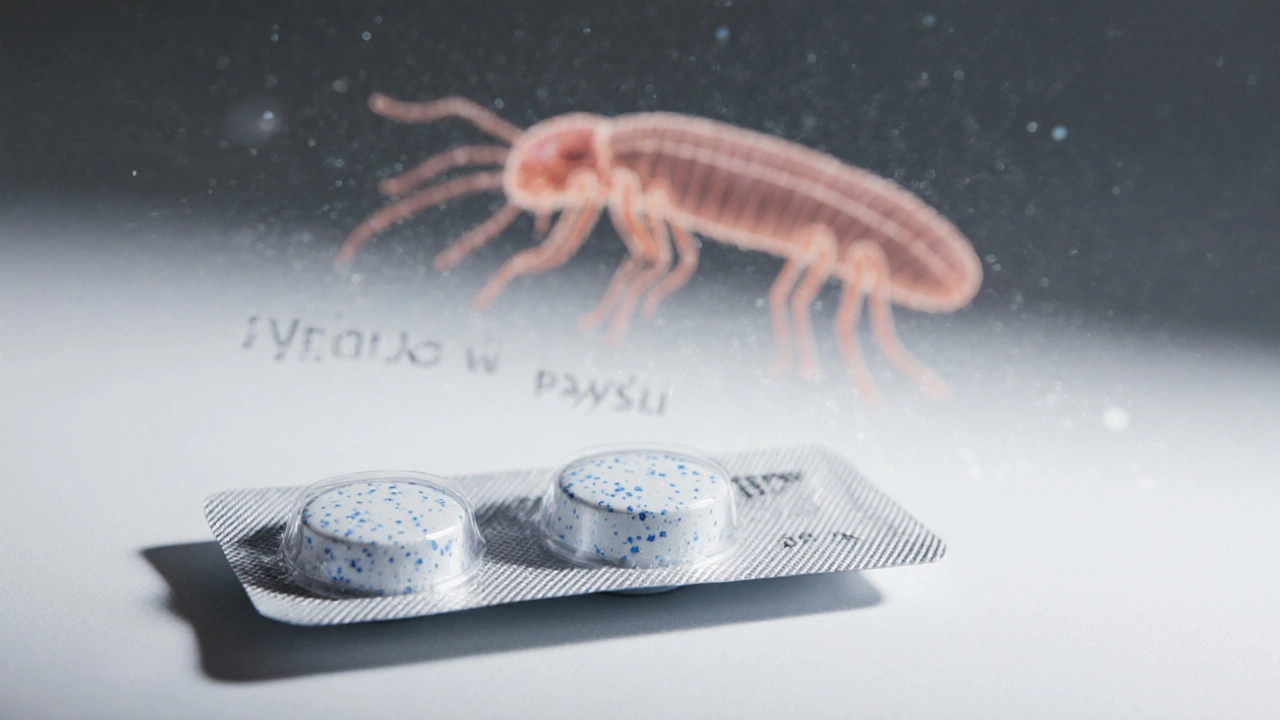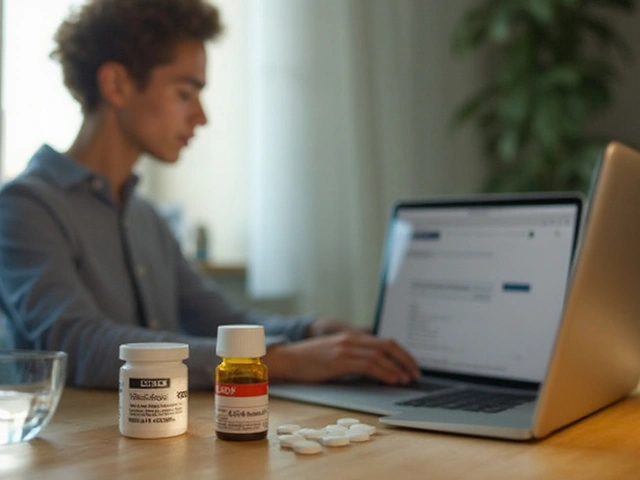Antiparasitic Drug Comparison Tool
Recommended Treatment Options
Detailed Comparison
When you hear the name Iverheal is a brand of ivermectin, an antiparasitic medication used to treat a variety of internal and external worm infections, the first question is often: "What else can I take if Iverheal isn’t right for me?" This guide lines up Iverheal side‑by‑side with the most common alternatives, so you can see how they differ in mechanism, dosage, safety, and cost. No fluff-just the facts you need to decide which drug fits your situation.
Key Takeaways
- Iverheal works by binding to parasite nerve and muscle cells, causing paralysis and death; most alternatives target the parasites’ metabolic pathways.
- Albendazole and Mebendazole are first‑line for many soil‑transmitted helminths and generally cost less than Iverheal in Australia.
- Nitazoxanide shines against protozoa like Giardia, while Praziquantel is the go‑to for tapeworms and flukes.
- Side‑effect profiles vary: Iverheal can cause mild neuro‑toxicity at high doses, whereas Metronidazole frequently leads to a metallic taste and nausea.
- For most adult patients, a short 1‑day course of Iverheal is convenient, but several alternatives require multi‑day regimens.
How We Compare Antiparasitic Drugs
To keep the comparison fair, we look at six practical criteria that matter to anyone buying a prescription or over‑the‑counter antiparasitic:
- Mechanism of action - how the drug kills or disables the parasite.
- Common clinical indications - the infections each drug is approved for.
- Typical dosage and treatment length - what you actually have to take.
- Side‑effect frequency and severity - what to expect during and after treatment.
- Cost in Australian dollars (AU$) - price per standard course as of Oct2025.
Below is a snapshot that brings all six points together.
| Drug | Mechanism | Key Uses | Typical Dose | Common Side‑effects | AU$ (2025) |
|---|---|---|---|---|---|
| Iverheal (Ivermectin) | Glutamate‑gated chloride channel agonist → paralysis | Strongyloides, scabies, onchocerciasis, some off‑label viral uses | 200µg/kg single oral dose | Dizziness, mild pruritus, rare neuro‑toxicity at high doses | ≈AU$45 per tablet pack |
| Albendazole | Microtubule inhibition → impaired glucose uptake | Hookworm, Ascaris, neurocysticercosis | 400mg daily for 3-7days | Abdominal pain, elevated liver enzymes | ≈AU$20 per 10‑tablet pack |
| Mebendazole | Same as Albendazole (microtubule inhibition) | Roundworm, whipworm, pinworm | 100mg twice daily for 3days | Transient GI upset, rare liver issues | ≈AU$15 per 10‑tablet pack |
| Nitazoxanide | Interferes with pyruvate:ferredoxin oxidoreductase | Giardia, Cryptosporidium, some viral gastroenteritis | 500mg twice daily for 3days | Headache, dark urine, mild liver enzyme rise | ≈AU$55 per 10‑tablet pack |
| Praziquantel | Increases Ca²⁺ permeability → muscle contraction | Schistosomiasis, tapeworms (Taenia, Hymenolepis) | 40mg/kg single dose (or split in 2 doses) | Abdominal pain, dizziness, rare allergic rash | ≈AU$30 per 10‑tablet pack |
| Metronidazole | DNA synthesis inhibition → bacterial and protozoal death | Amoebiasis, bacterial vaginosis, trichomoniasis | 500mg three times daily for 5-10days | Metallic taste, nausea, possible neuropathy with long use | ≈AU$25 per 10‑tablet pack |

Deep Dive: When to Choose Iverheal
Iverheal shines in a few niche scenarios:
- Strongyloidiasis - a single dose often clears the infection completely.
- Scabies outbreaks - especially in institutional settings where a quick, single‑dose regimen simplifies compliance.
- Off‑label viral use - some clinicians still prescribe low‑dose ivermectin for early COVID‑19, although evidence is mixed.
Because the drug stays in the system for a short period, the risk of cumulative toxicity is low, making it attractive for travelers who need a one‑off prophylactic dose.
When Alternatives Outperform Iverheal
Not every parasite responds to ivermectin. Here’s where the other drugs take the lead:
- Albendazole or Mebendazole - best for roundworm, whipworm, and hookworm. They also cross the blood‑brain barrier, a plus for neurocysticercosis.
- Nitazoxanide - your go‑to for Giardia and Cryptosporidium, especially in immunocompromised patients where ivermectin has no activity.
- Praziquantel - unrivaled for schistosomiasis and tapeworms; ivermectin does nothing against flatworms.
- Metronidazole - essential for protozoan infections like amoebiasis and trichomoniasis, where ivermectin is ineffective.
Cost can also tip the scales. In most Australian pharmacies, Albendazole and Mebendazole are 30‑40% cheaper per treatment than Iverheal, which matters for repeat courses.
Safety Snapshot: Side‑effects You Should Know
All antiparasitic drugs carry some risk. Below is a quick cheat sheet:
| Drug | Most common mild side‑effects | Rare but serious |
|---|---|---|
| Iverheal | Dizziness, mild itching | Seizures, severe neuro‑toxicity (high dose) |
| Albendazole | Abdominal cramps, nausea | Hepatotoxicity, bone marrow suppression |
| Mebendazole | Diarrhea, flatulence | Severe liver injury (very rare) |
| Nitazoxanide | Headache, dark urine | Severe hepatic failure (extremely rare) |
| Praziquantel | Dizziness, abdominal pain | Allergic anaphylaxis |
| Metronidazole | Metallic taste, nausea | Peripheral neuropathy with prolonged use |

Practical Tips for Patients
- Always take the drug with food unless the label says otherwise; food improves absorption for most antiparasitics.
- Check liver function tests before starting Albendazole, Mebendazole, or Nitazoxanide if you have existing liver disease.
- If you’re pregnant, avoid Iverheal and Albendazole unless the benefit outweighs the risk; Praziquantel is considered relatively safe in the second trimester.
- Store tablets in a cool, dry place. Ivermectin degrades quickly under high humidity.
- Complete the full course even if symptoms improve; parasites can persist and cause relapse.
Bottom Line: Picking the Right Drug
Think of antiparasitic choice like fitting a key to a lock. Iverheal is a perfect key for Strongyloides, scabies, and onchocerciasis, but you’ll need a different key-Albendazole, Mebendazole, Nitazoxanide, Praziquantel, or Metronidazole-for other parasites or when cost and side‑effect profile matter more. By matching the drug’s mechanism to the parasite’s biology, you get higher cure rates and fewer surprises.
Frequently Asked Questions
Can I use Iverheal for COVID‑19?
Current Australian guidelines do not recommend ivermectin for COVID‑19 outside clinical trials. Some doctors prescribe low‑dose regimens off‑label, but large‑scale studies have not shown a clear benefit.
Is Albendazole safe for children?
Yes, a pediatric dose of 200mg twice daily for three days is approved for children over 2years old. Always check weight‑based dosing with your pharmacist.
How long does it take for Iverheal to work?
Most patients feel symptom relief within 24‑48hours, and stool tests are usually negative after 5‑7days.
What should I avoid while taking Metronidazole?
Alcohol can cause a severe disulfiram‑like reaction (flushing, nausea, rapid heartbeat). Avoid alcoholic drinks and even foods containing hidden alcohol for at least 48hours after the last dose.
Are there any drug interactions with Iverheal?
Ivermectin can increase levels of certain anticonvulsants (e.g., carbamazepine) and may interact with warfarin, raising bleeding risk. Always list all concurrent meds to your doctor.






Comments
Ivermectin functions as a glutamate‑gated chloride channel agonist that hyperpolarises neuronal membranes in nematodes leading to rapid paralysis and death of the parasite.
When you are choosing between Iverheal and its alternatives, the first step is to map the parasite’s biology onto the drug’s mechanism of action; ivermectin’s affinity for glutamate‑gated chloride channels makes it superb for organisms that rely heavily on this pathway such as Strongyloides and scabies mites. In contrast, albendazole and mebendazole target microtubule polymerisation, which is why they excel against soil‑transmitted helminths like Ascaris, hookworm, and neurocysticercosis. Nitazoxanide interferes with the pyruvate:ferredoxin oxidoreductase complex, giving it a niche advantage in protozoal infections such as Giardia and Cryptosporidium. Praziquantel’s ability to increase calcium permeability is the cornerstone of its efficacy against flatworms including Schistosoma species and tapeworms. Metronidazole’s DNA synthesis inhibition makes it the drug of choice for amoebiasis, bacterial vaginosis, and trichomoniasis. From a pharmacoeconomic perspective, ivermectin sits at roughly AU$45 per pack, which is noticeably higher than albendazole at AU$20 and mebendazole at AU$15, so cost may steer the decision in resource‑limited settings. Safety profiles also differ: ivermectin is generally well tolerated but can cause neurotoxicity at supra‑therapeutic doses, whereas albendazole and mebendazole carry a risk of hepatotoxicity and bone‑marrow suppression with prolonged use. The dosing convenience of a single oral dose of ivermectin cannot be overstated for compliance, especially in mass‑drug‑administration campaigns. However, for infections requiring prolonged therapy, such as neurocysticercosis, the multi‑day regimens of albendazole are indispensable. Drug–drug interactions are another consideration; ivermectin can potentiate the effects of certain anticonvulsants and may increase warfarin anticoagulation, while albendazole is a known inducer of CYP450 enzymes. In pregnant patients, ivermectin is generally avoided unless benefits outweigh risks, while praziquantel is considered relatively safe in the second trimester. Pediatric dosing also varies: ivermectin is weight‑based at 200 µg/kg, whereas albendazole and mebendazole have fixed weight‑adjusted regimens that are straightforward to calculate. Ultimately, the optimal choice emerges from a matrix of parasite type, drug mechanism, safety, cost, and patient-specific factors such as age, pregnancy status, and comorbidities. By aligning these parameters, clinicians can maximise cure rates while minimising adverse events. Therefore, rather than defaulting to a single “best” drug, a nuanced, case‑by‑case assessment yields the most rational therapeutic pathway.
I appreciate the thorough matrix you presented, and I would add that the bioavailability of ivermectin significantly improves when taken with a fatty meal, which can be a practical tip for patients struggling with compliance.
Great overview, really helpful, and I love how you broke down each drug’s niche, especially the part about cost differences, because budgeting is always on my mind, and the safety notes are super useful for anyone prescribing!
Sure, because spending $45 on a single dose is exactly what every traveler dreams of.
Honestly, if you’re still reaching for ivermectin when cheaper options exist, you’re basically paying for a brand name like you would for a designer shoe when a basic sneaker does the job.
What they don’t tell you is that the pharma giants push ivermectin to keep you dependent on their endless supply chain while hiding the real natural cures.
The ethical calculus you invoke mirrors the classic dualism between commodified biopharma artifacts and indigenous phytotherapeutic wisdom; when we deconstruct the epistemic scaffolding that legitimizes ivermectin’s market dominance, we unveil a narrative of hegemonic control masquerading as medical progress.